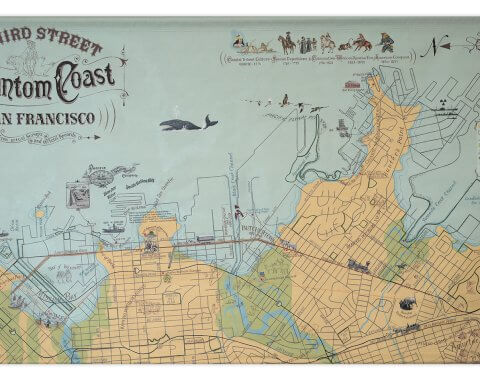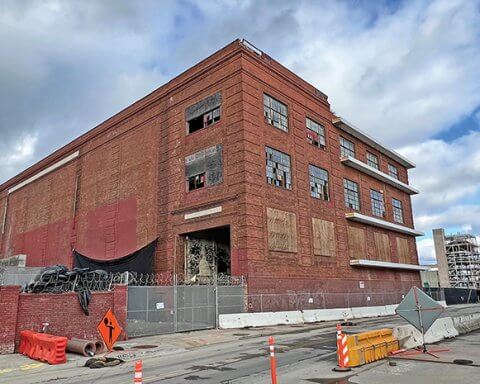According to Jim Cunha, who was born, raised, educated, and lived in the San Francisco Bay Area for most of his 72 years, he and his wife, Maureen, didn’t leave California; California left them. Despite the presence of multiple siblings, children, and grandchildren the Cunhas found it difficult to downsize from their home in Orinda and stay in the Bay Area. They could sell high but then had to join the frenzied competition to buy “less house.”
The Cunhas represent one demographic that feels squeezed out of the state. While they’re in the privileged position of selling a high-value home, they believe the proceeds are better spent elsewhere. A well-constructed house in a desirable Bay Area neighborhood would eat up much of the income garnered from the sale of an existing residence.
Then there’s another demographic; families looking to upgrade, like Robby Rydinski and his wife, Kristin. Robby was also born, raised, educated, and lived in the Bay Area until about four years ago. He and his wife resided in a small two-bedroom, one-bath quadplex in Walnut Creek. After the birth of the Rydinskis’ daughter, Olivia, the family decided to buy a house in 2018.
“We were in desperate need of more space,” he said. “We worked with a realtor for eight, nine months, put offers on seven or eight homes, and were usually pretty aggressive about it; going $30,000 to $60,000 above the asking price. We didn’t get anything. I thought I wanted to raise my family in the Bay Area, that was my intention, but it didn’t work out.”
Enter Reno, the “biggest little city in the world,” a motto that acknowledges the municipalities’ small geography and oversized self-image. Both the Cunhas and the Rydinskis visited the city to see friends or family and discovered the housing market was vastly different than the Bay Area. Reno is less than a four-hour drive to San Francisco, in striking distance of friends and family in Northern California and offers easy access to Lake Tahoe and recreational activities.
Less than two years ago the Cunhas found a three-year-old house with wonderful views, close to downtown, that’d have cost almost three times what they paid if it in the Bay Area. The Rydinskis bought a brand-new, 2,400 square foot house without a bidding war.
However, the real estate window in Reno, and throughout the country, may be closing. The median price for an American home in 2021 rose nearly 20 percent and the for-sale inventory hit a new low in January 2022, according to Altos Research. Still, Reno remains far more affordable than the Bay Area, despite the 22 percent housing price pop that occurred in 2021.
While wages in Nevada are roughly 19 percent less than in San Francisco, the cost of living is cheaper, by about 45 percent, according to Salary.com. Virtual work means some employees can keep their Bay Area salary while enjoying lower cost living out-of-state.
“At my income level, I was paying an inordinate amount of tax in California; in Nevada there’s no state income tax,” said Cliff Scheffel, who with his wife, Gayle, moved to Reno from Walnut Creek about six years ago. “I more than paid for the mortgage on my house on an annual basis by not paying California taxes. Unlike many people who may have downsized because of lesser housing prices, we bought a more expensive house than in the East Bay; we did an upgrade! We have a bigger house and still come out ahead because of the state tax situation.”
Rydinski agreed. “The ‘no state income tax’ is an extra 10 percent in earnings,” he said. “You never know until you do your taxes. After doing my taxes I asked myself, ‘What was I paying this in California for?’ I just got a California address, high housing prices, and overcrowding.”
Scheffel concured, “I do not think you are getting what you should from taxes paid in California. When you cross from Nevada to California, you see a noticeably higher level of disrepair on the California side. The major cities in California are just plain dirty, much more so than Nevada.”
The Scheffels still own a home in San Francisco, at 20th and Texas streets, where some of their kids live, but have no intention of moving back because of the City’s chronic homelessness, crime, crowding, and traffic congestion.
Scheffel, a partner at an executive search firm, said most of his clients were in Silicon Valley. He often spent two to three hours in the afternoon commuting back to his home in Walnut Creek.
“It became unlivable,” he said. “A good example is it takes less time to drive from my house in Reno to the airport, fly to San Jose, and Uber to my clients than it did driving from the East Bay. I can now save an hour by flying to San Jose from Reno than by driving from the East Bay.”
According to Cunha, being a San Franciscan used to be a source of pride. “You said ‘San Francisco,’ and people noticed. Now, sadly, it’s somewhat of an embarrassment and a huge disappointment,” he said, citing homelessness and crime. “I don’t understand how a place with so many resources can have some of the severe problems it does. There are no solutions so far despite huge spending.”
San Francisco’s population of individuals without permanent shelter is estimated at 8,000 and growing. Reno’s is less than 1,000 and dropping, according to This is Reno. The City’s property crime rate is almost twice as high as Reno’s, according to FBI data.
Neither Cunha nor Scheffel feel safe in San Francisco.
“The crime is a major deterrent to even spending the weekend in San Francisco,” Scheffel said. “Because of family, I go back every six weeks to the house on Potrero Hill, but I just find being in San Francisco is so different than what I experienced growing up. It’s not enjoyable anymore. I don’t feel safe walking on even the edges of the Financial District or Union Square.”
Cunha, Rydinski, and Scheffel all said they’d never move back to the Bay Area despite loving it previously. They aren’t alone. A study from the California Policy Lab released on December 15, 2021 found that the number of Californians moving to other states increased since the start of the pandemic. In the counties of San Francisco, Santa Clara, and San Mateo, exits rose by 34 percent, 26 percent, and 15 percent at the end of September 2021.
“I don’t think San Francisco is a Mecca anymore,” Scheffel said. “That’s what California needs to be concerned about.”



